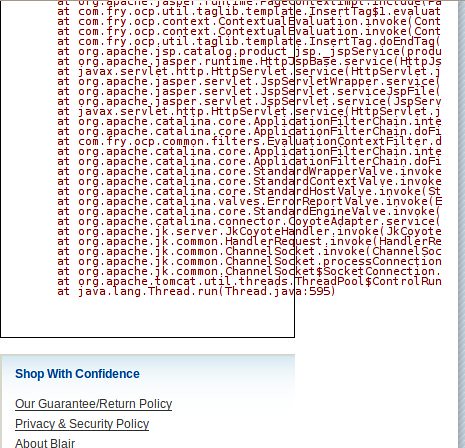When you are developing a customer front web application, you should take every measure to hide technical details from the user. This is especially true for JEE applications. Not only because the user is pissed off looking at a huge stack trace but also it reveals a lot. Look at the following figure

This famous shopping site has been developed to show stack trace on the web page. The developer cleverly hid the trace when the page loads up. But leaves a link that uses DHTML to show the hidden div. That kinda defeats the whole purpose. If the user sees this link, he is less likely NOT to click it.
If you really want to have a handle on this. Print out a unique token (a timestamp, md5 hash or something - get creative here), and correspondingly log it in your appserver along with stack trace. Have the user (customer or your pain-in-the-neck-QA guy) email you that token. Now you can grep that log for it.
Now, you know, I have less confidence in that site this day forward.

This famous shopping site has been developed to show stack trace on the web page. The developer cleverly hid the trace when the page loads up. But leaves a link that uses DHTML to show the hidden div. That kinda defeats the whole purpose. If the user sees this link, he is less likely NOT to click it.
If you really want to have a handle on this. Print out a unique token (a timestamp, md5 hash or something - get creative here), and correspondingly log it in your appserver along with stack trace. Have the user (customer or your pain-in-the-neck-QA guy) email you that token. Now you can grep that log for it.
Now, you know, I have less confidence in that site this day forward.